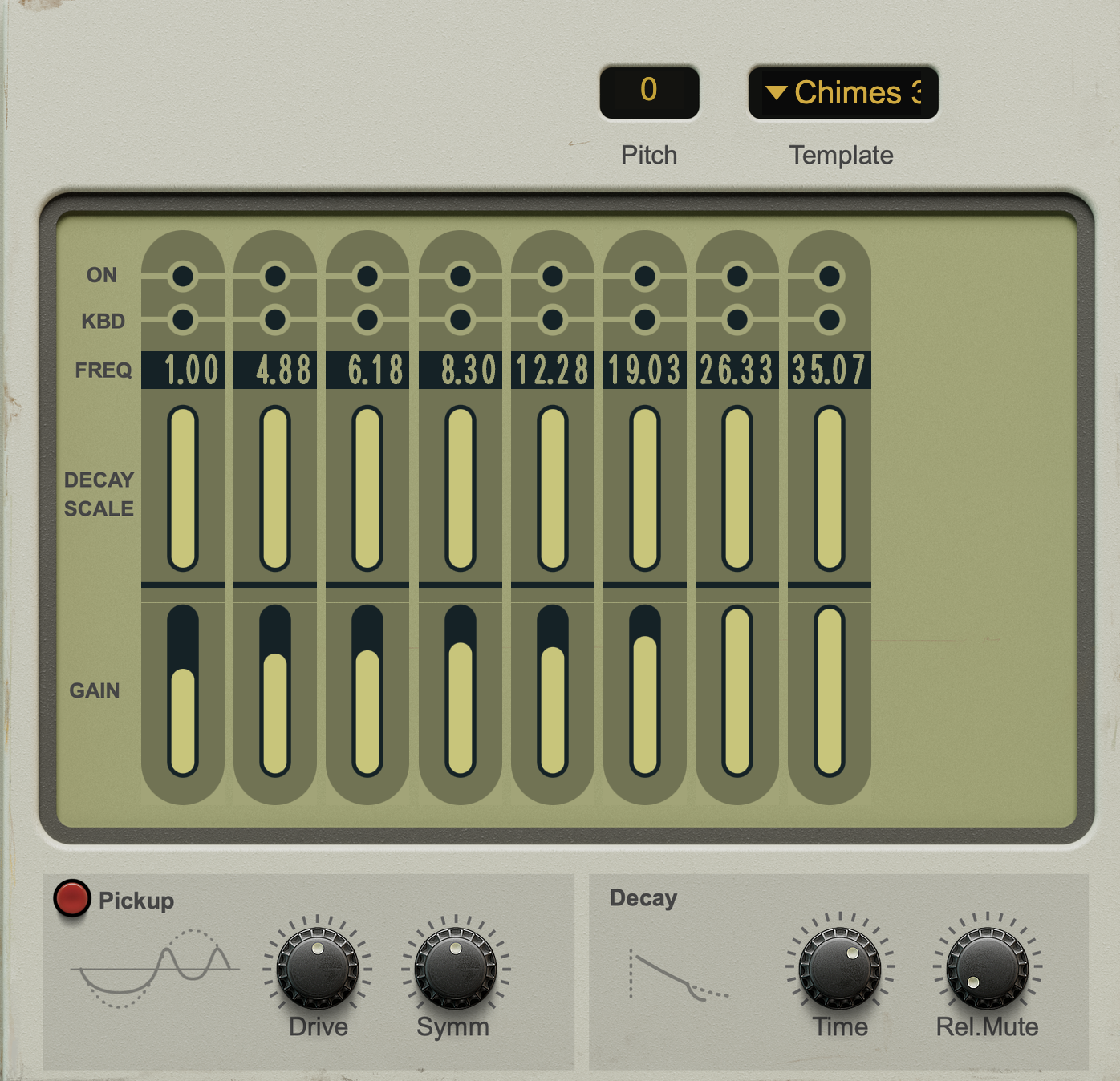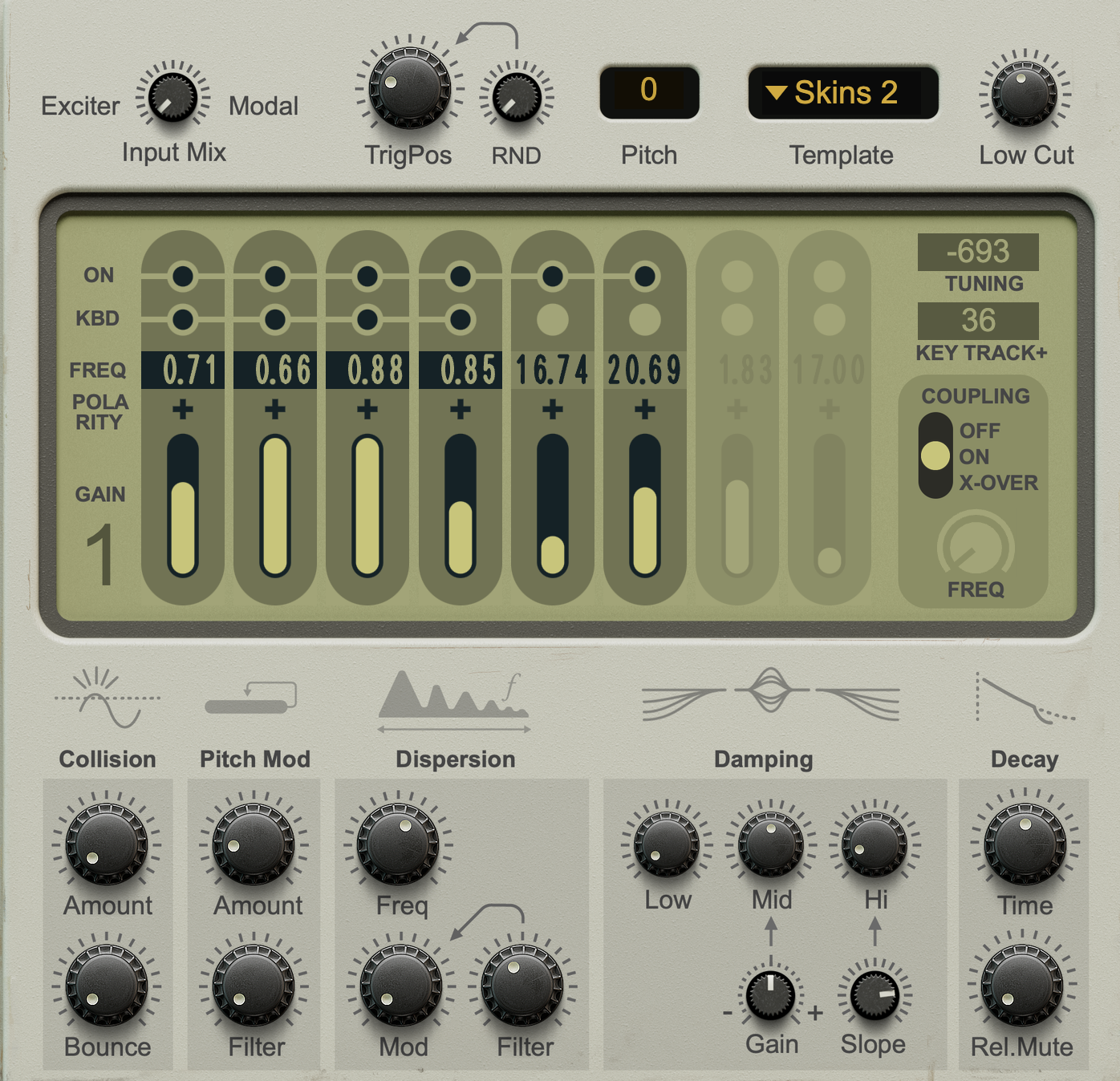OBJEKT Review
Reason Studios has been kind enough to give me an early copy of their latest synth Objekt. Objekt is a physical modeling synthesizer that brings a few unique features to the world of physical modeling. I’m a big fan of this type of synthesis as it seems every developer approaches it with a new technique. Unlike other forms of synthesis, where the title is a description of the technical methods for producing audio, physical modeling is describing the end results, and the details of how we get there can vary significantly from one design to another. There are some constants though, the most typical method is to use a resonator and an exciter to produce an acoustic-like tone. An exciter is any given audio, say a click, or white noise, some sort of impulse which you feed into the resonator.
Objekt uses both a modal resonator and a pair of waveguide resonators to produce its sounds. The UI looks almost like some sort of alien construction device, reminiscent of some older software but with a modern polish. It gives me the visual vibes of one of those classic reaktor synths such as spark or kontour. In terms of sound, Objekt ranges from truly bizarre to shockingly realistic with a fair bit of unusable mixed in there. It’s one of those synths you have to work for, the synthesis is pretty entangled, so light adjustments can sometimes ruin an otherwise amazing preset, but it’s worth spending the time to get these results.’’
EXCITER: Objekt has 2 sources for its exciter, and “impact” and “noise” which are then fed into a single band eq for further sculpting. The exciter impact is a click with controls for hardness and tonal frequency. You can also activate a diffuser for the impact which smears the click into more of a brief swipe or scrape, sorta like turning a guitar pick on its side. Adjusting these settings will really affect how the resonators respond and the feel of the instrument, this is especially a great place to add velocity modulation to give a more organic feel to your preset.
Next there is the option to add one of the various “noise” options, which has an ADSR envelope, and can be delayed from the impact to give secondary impact. The rate control works a little different for each mode, with color it alters the tone, on static and random pulse, it affects the density clicks, and on the pulse modes it changes the speed of the pulses. I enjoy that pulse can go into audio range for some really interesting source material. (note: on pulse mode, leave rate at default value, and keytrack with a depth of 80 for musical tuning)
RESONATORS: Objekts resonators are where things really shine, each one is an array of 8 smaller resonators, which can individually be tuned and mixed and you can even assign some of them to ignore keytracking for more atonal sounds. The waveguide objects can both be fed directly from the exciter, or from the resonator just before it in the chain. This allows you to stack interesting chains of Resonance to create sounds that blossom out from the impact. Each resonator comes with a collection of templates if you don’t want to make everything from scratch, and you can also randomize each resonator for even more instant variation. It can be pretty easy to create a patch that is out of key relative to a keyboard, so there’s an included tuner and analyzer to fix things after they go off course.
Modal: The modal engine is the simplest and first in the chain. Its 8 resonators are simple and resonate a single harmonic with a decay scale, allowing you a relative decay so that some harmonics can ring out longer than others. This can then be fed into a “pickup” distortion for a crunchier sound.
Objects: The two object resonators are my favorite, if just this section was a synth, I’d be talking about it. Each object is an array of 8 comb filters or feedback lines coupled together to create an interesting feedback network. You can adjust the “trig position” altering the behavior or the resonator, and adjust the feedback crossover frequency to create bizarre atonal sounds. Each resonator can also be flipped in polarity. Playing around in this section gives such a wide range of interesting tones, from metals, to woods, to glass to otherworldly materials. It’s really worth playing around with different tuning arrangements and slight adjustments in gain. Each combination provides a new sound you’d never be able to predict, once you start applying modulation things really feel organic and alive. Below this are a few more controls that affect the resonator as a whole. Collision replicates the sound of the resonator colliding with a surface, you can even add bounces for some jangly textures. Pitch mod replicates the unstable tuning of a body being plucked or struck, this control gets pretty noisy on extreme settings, but ends up making things sound surprisingly acoustic. I will not attempt to accurately describe “dispersion”, this control gets weird. The frequency dial sounds almost like a frequency shifter, but one that is interacting organically with the resonator. Mod/filter add feedback and can sustain infinitely while distorting the over all quality of the sound. Finally a bit of damping lets you really shape the over all tone of the resonator. These controls combined with the coupled resonators provide an infinite array of sonic possibilities, the only downside being that many of the possible sounds are rather bad, but exploring this sound field can lead to some of the most unique sounds imaginable. I spend most of my time in the object sections just playing around with various experiments, I don’t think any other physical modeling synth has quite this much to play with.
FX and MODULATION: Most Reason synths kinda fall flat in both the effects and modulation sections. It is important to recognize that these synths exist in the Reason eco system, and will be used alongside other modules and devices, or in a rack as a vst. So with this in mind, there’s all the reason effects and modulators that can be added inside of combinator, so don’t take this section too seriously, it is just to provide information that applies specifically to Object. The effects are fairly basic, you get an EQ, distortion, compressor, delay, and reverb. All effects controls can be modulated and they are just enough to add a finishing touch to Object. Modulation includes 2 LFOs with all the traditional reason shapes, a curve sequencer, which can be stepped or smoothed. and 2 macros. The LFOs are enough to add some subtle motion to your patches, though I think I’d have preferred 4 total. As usual, reason has a mod matrix system that provides a few nifty sources for those who dig a bit under the hood. These include 2 static randoms, “key in octave” a rare source which gives each note a different value, wrapping around each octave, “black keys” a source I’ve never seen before which gives the black keys a different value, and even “single key” which can give any note (and its octaves) a unique value. These weirder sources are always a nice touch that allow you to explore some fun methods of instrument design.
All of this together makes Objekt just one of those wierd and extraordinary synths, it’s one of those synths that will just always feel a bit alien and otherworldly. At times it may be a bit frustrating, or confusing, but that’s one of the charms to this type of tool, you never really know what to expect. There’s a million other devices out there that do exactly what we’re all familiar with, Object is perfect for the unfamiliar, and for creating acoustic like sounds in a controlled synthesis environment. Time will tell how often I use this in tracks, but I really can see myself throwing it in for percussive and plucked elements, especially when I want those parts to have a bit more of a natural and organic vibe. Its worth mentioning, that because of the nature of this instrument, automation goes a long way, you can easily morph between all sorts of sounds and create instruments that seem to change in material and size. There’s also many other experiments I want to do so I’m sure I’ll be revisiting Objekt quite often.



